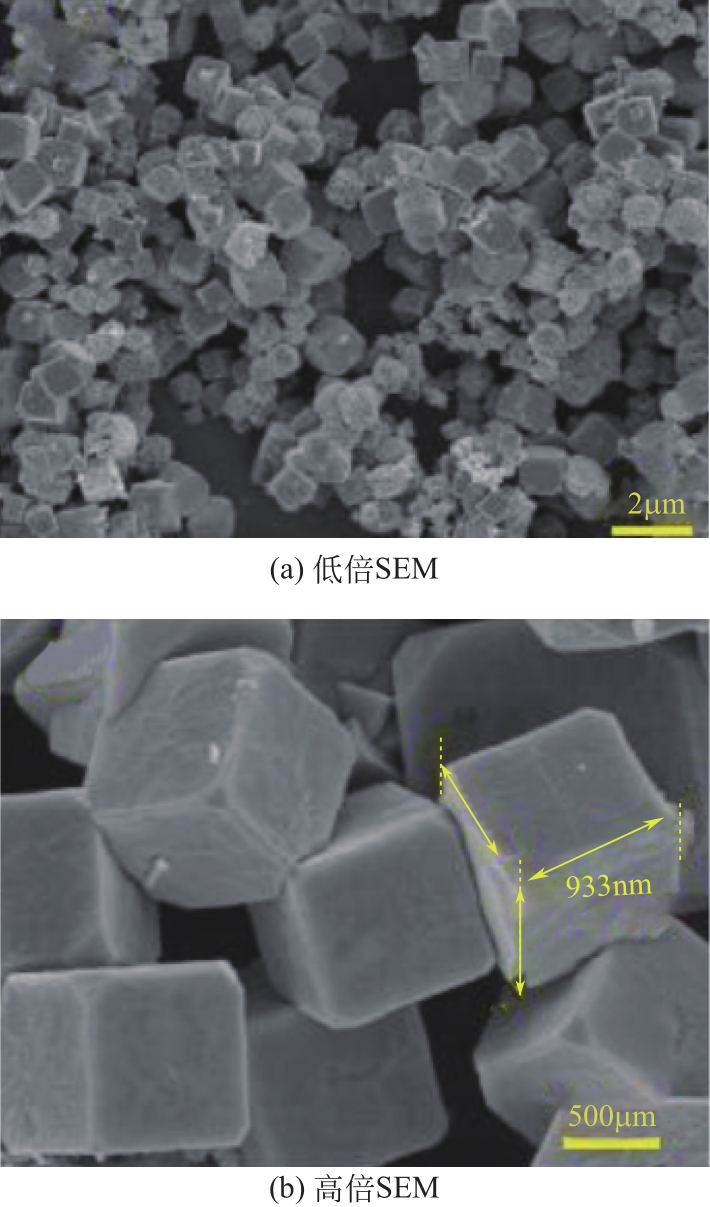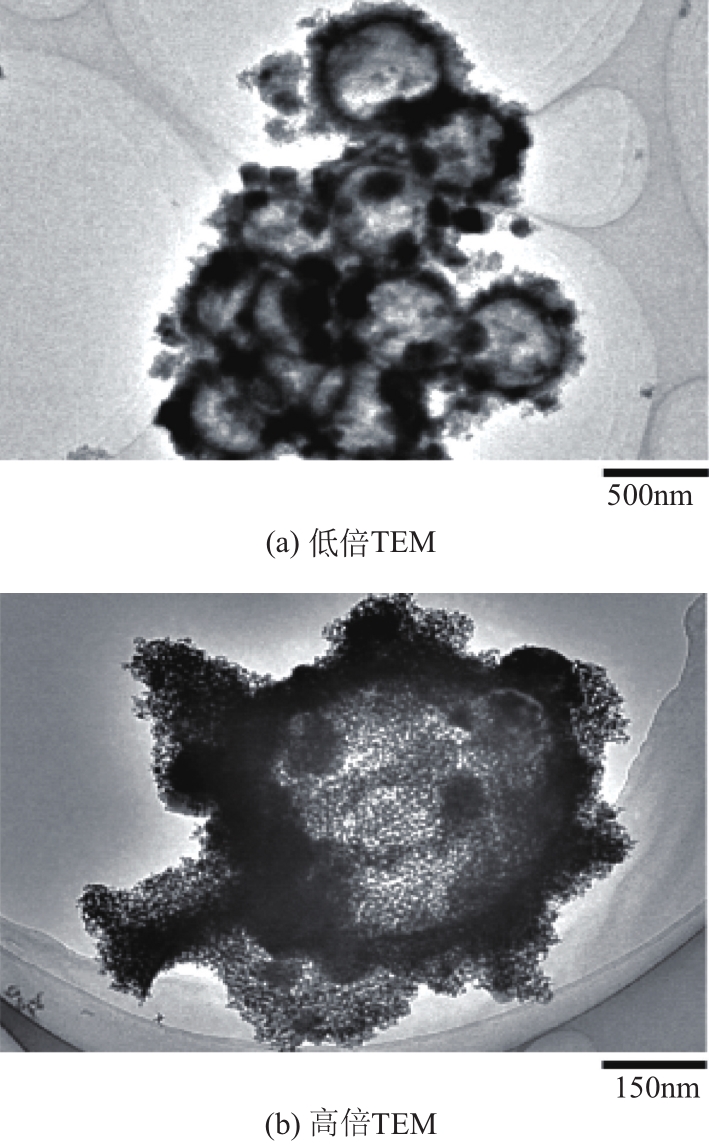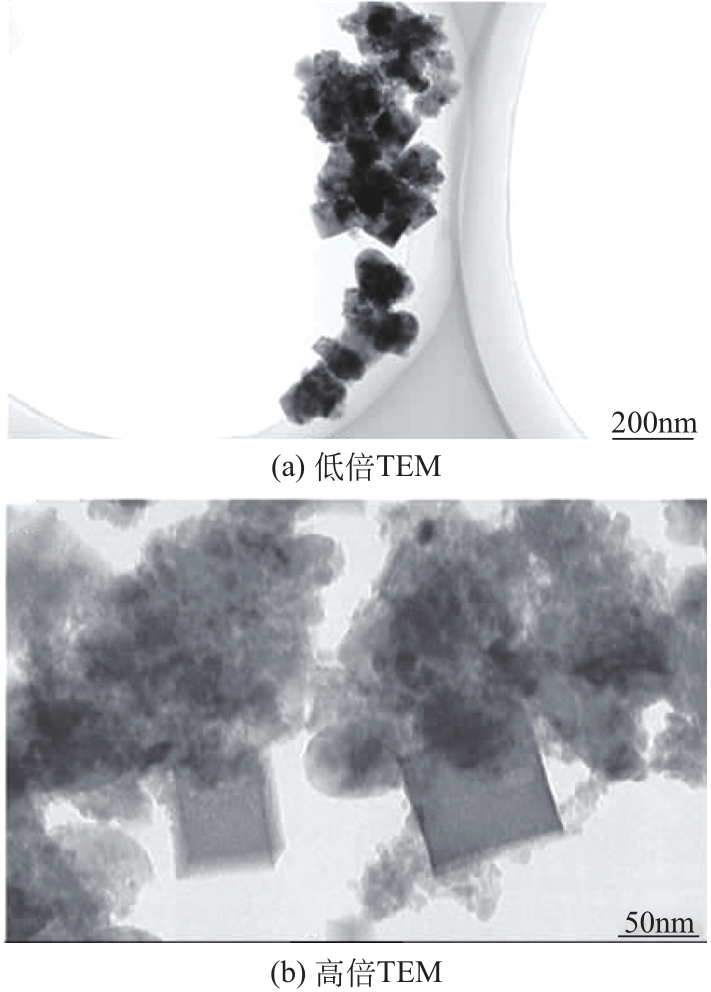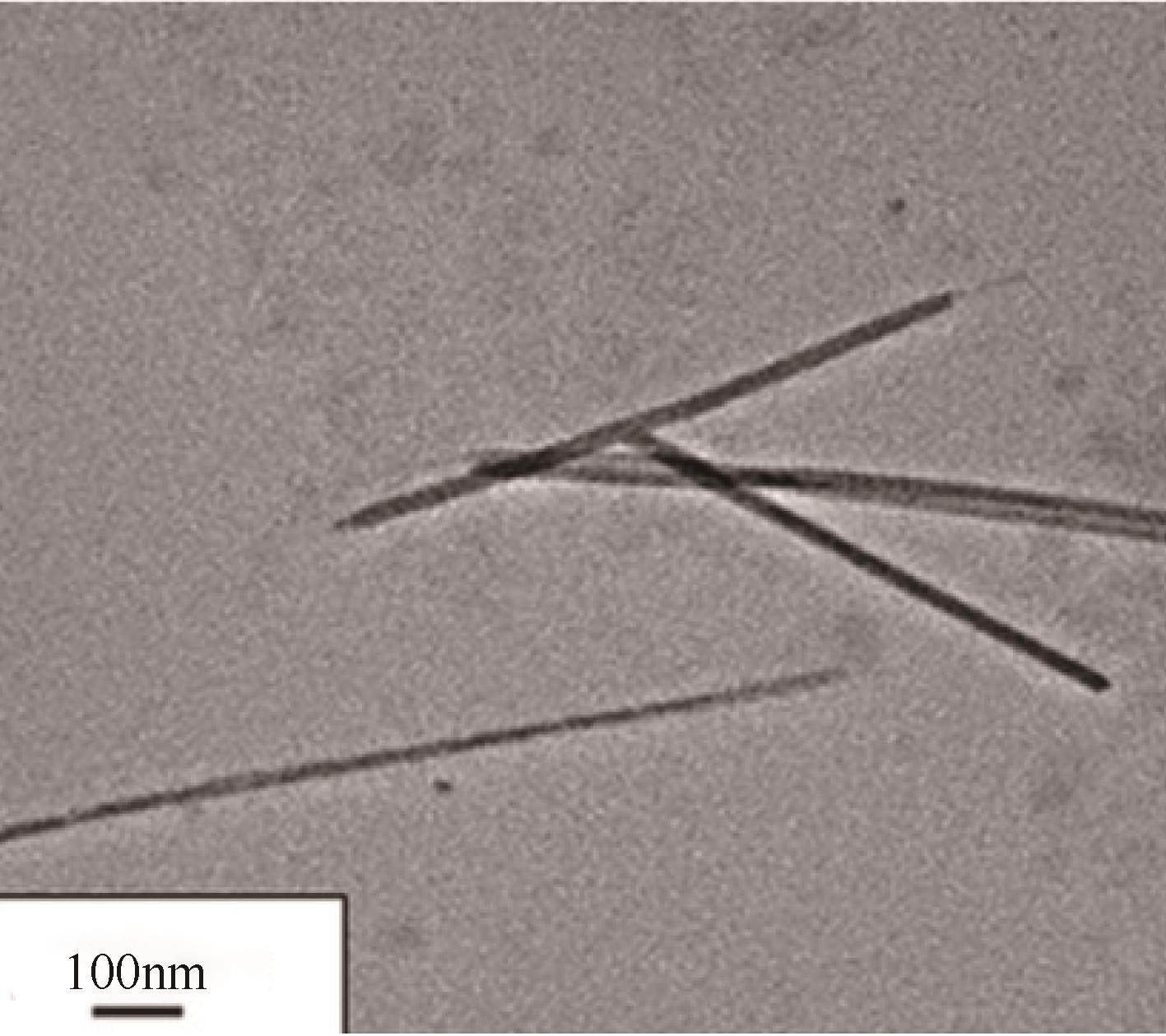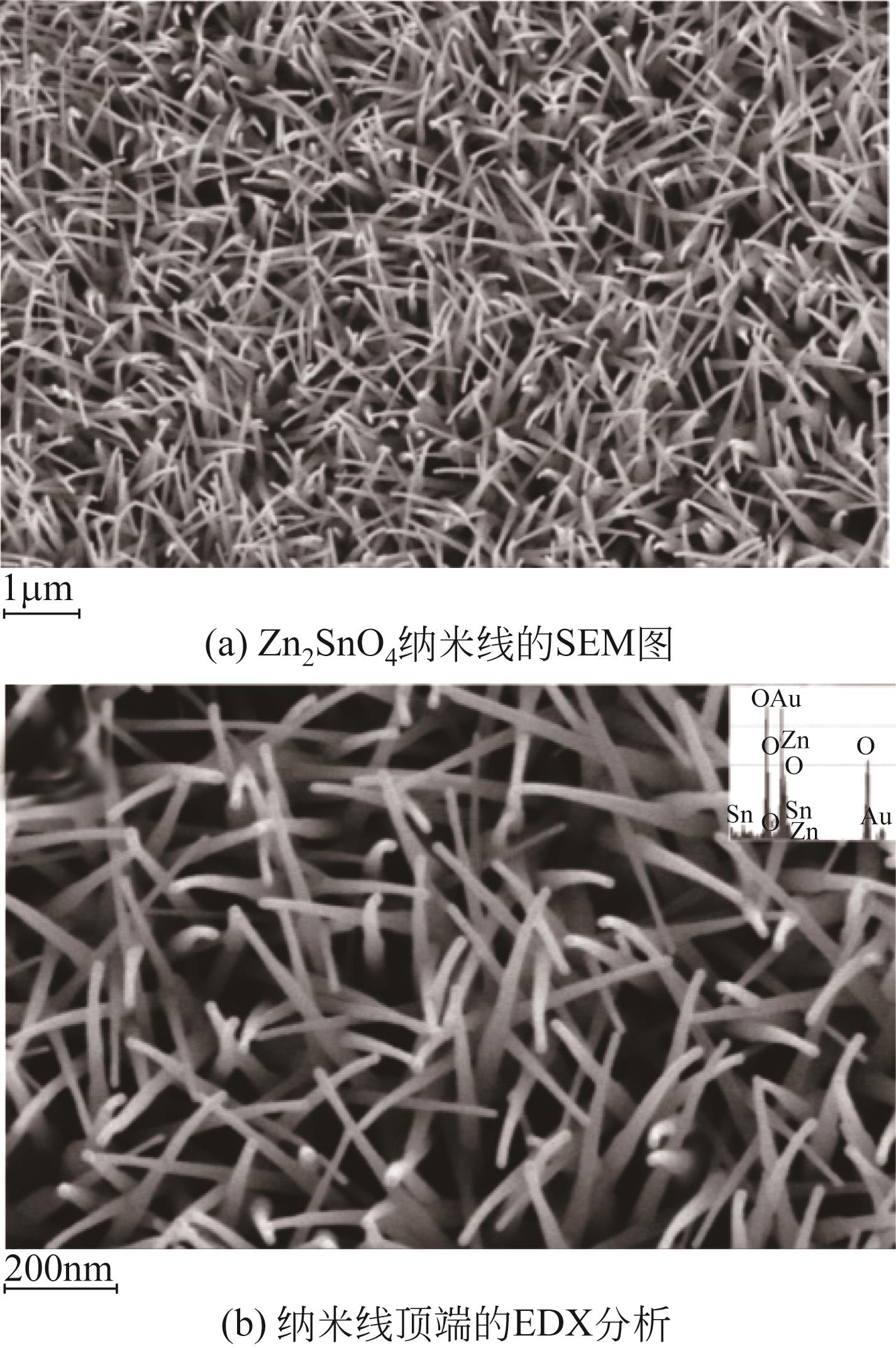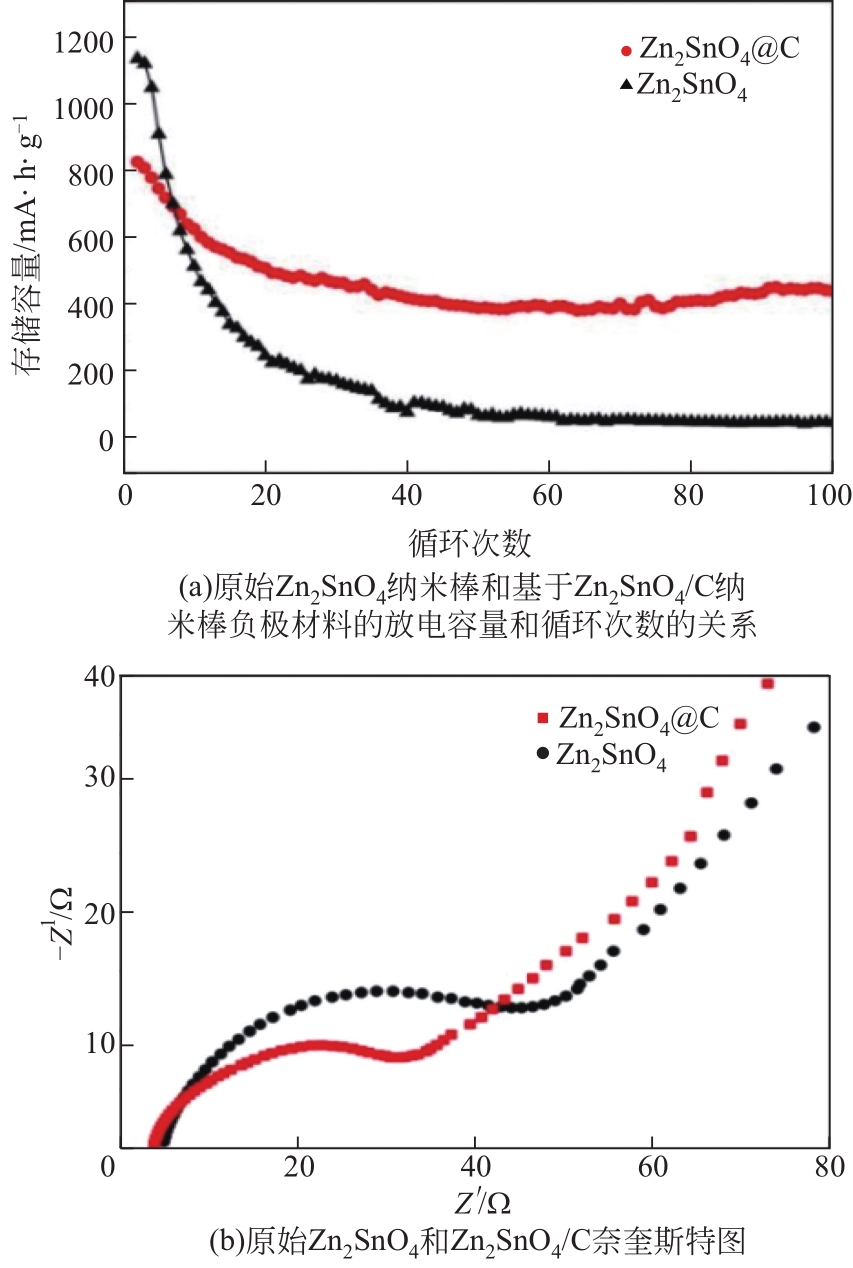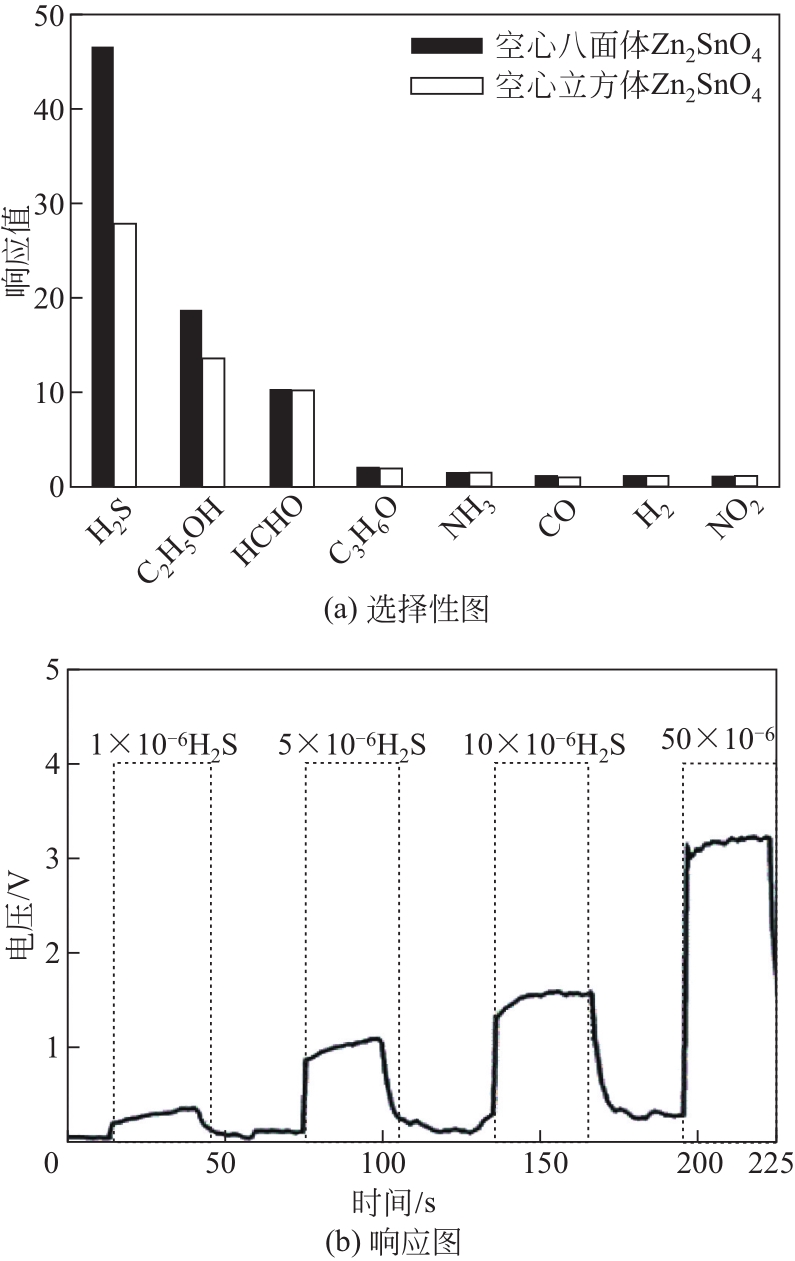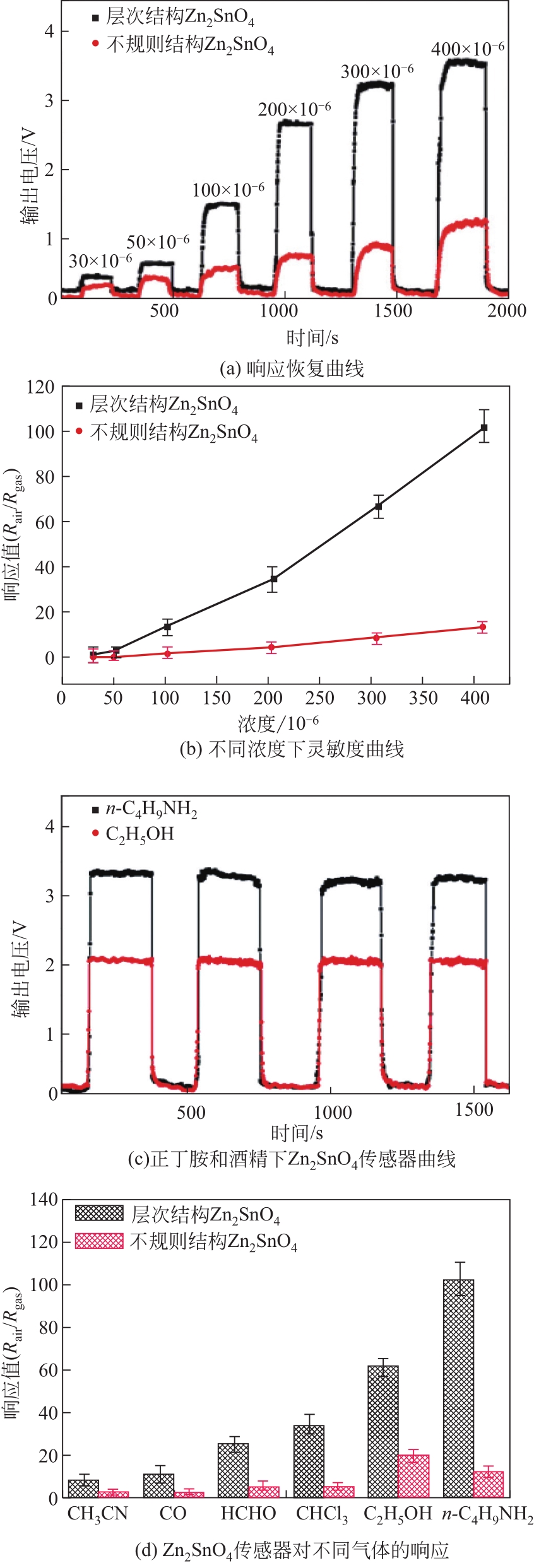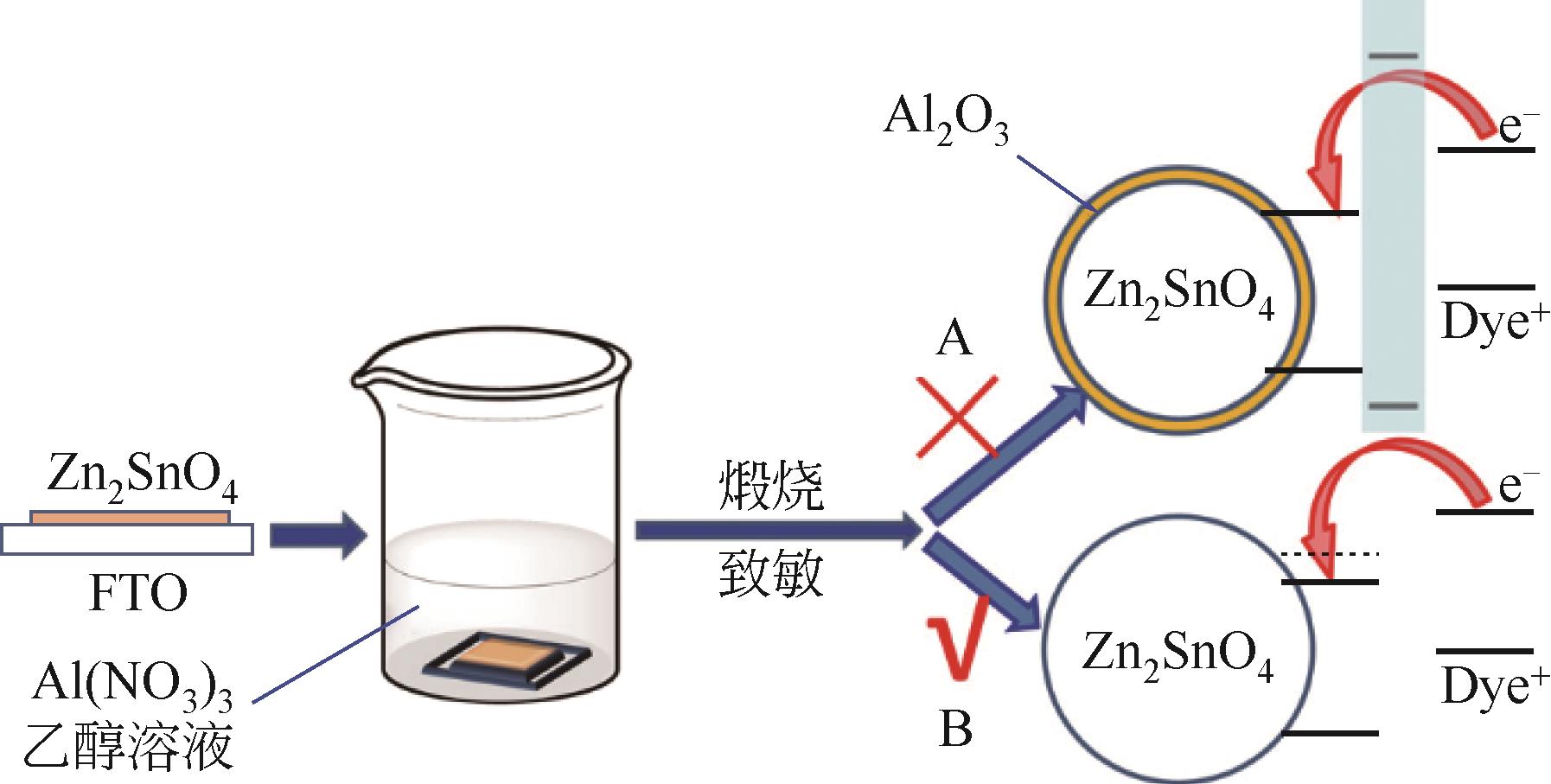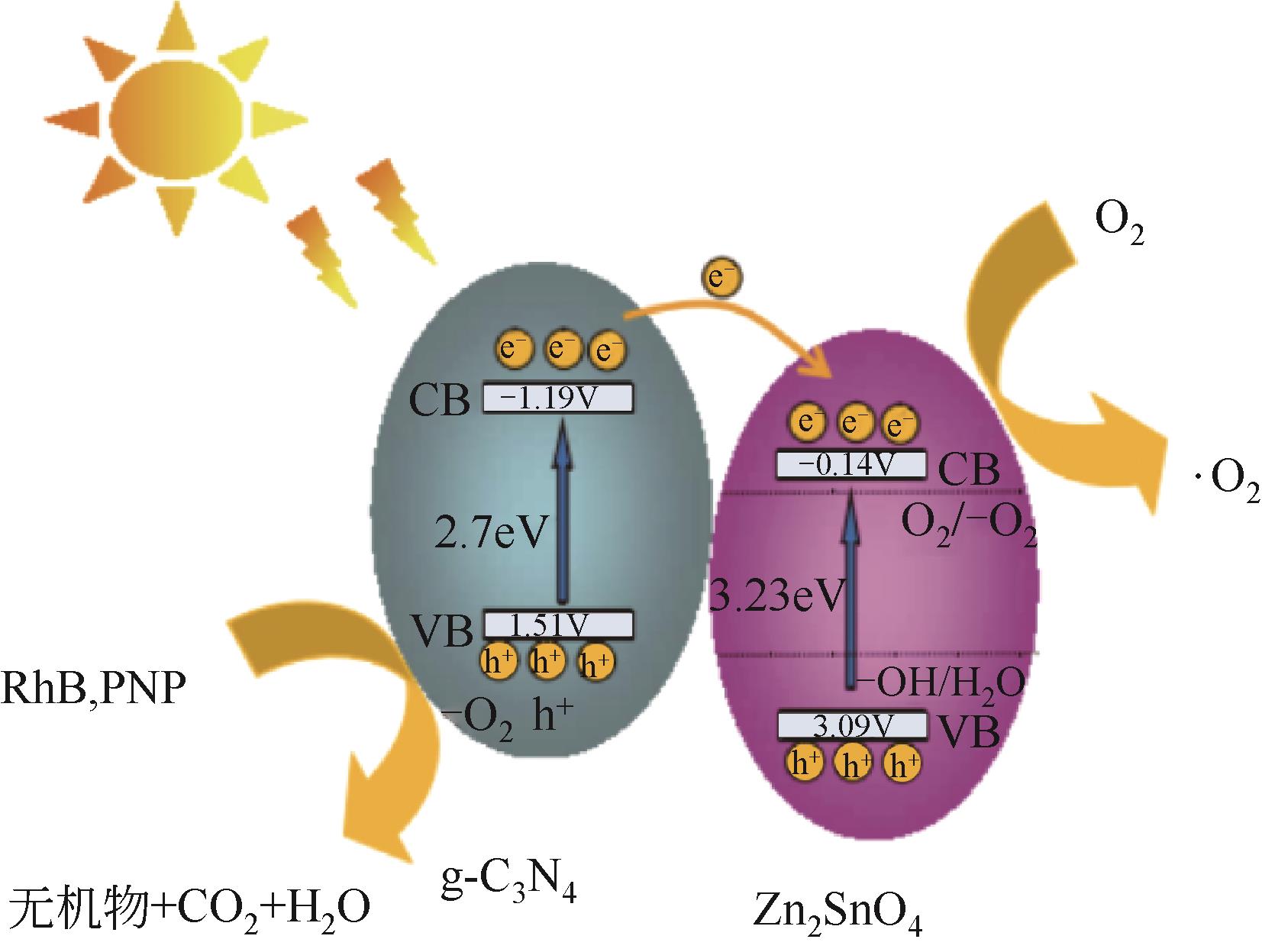Chemical Industry and Engineering Progress ›› 2022, Vol. 41 ›› Issue (6): 3113-3126.DOI: 10.16085/j.issn.1000-6613.2021-1595
• Materials science and technology • Previous Articles Next Articles
Research progress on the preparation method and application of zinc stannate nanomaterials
MA Dianpu( ), LI Jun, QIN Deqing, YUAN Yingjie, PAN Fei, FU Zewei(
), LI Jun, QIN Deqing, YUAN Yingjie, PAN Fei, FU Zewei( )
)
- Yunnan Tin Industry Group (Holding) Company Limited R&D Center, Kunming 650200, Yunnan, China
-
Received:2021-07-27Revised:2021-12-16Online:2022-06-21Published:2022-06-10 -
Contact:FU Zewei
锡酸锌纳米材料的制备方法及应用研究进展
马殿普( ), 李俊, 覃德清, 袁英杰, 潘飞, 符泽卫(
), 李俊, 覃德清, 袁英杰, 潘飞, 符泽卫( )
)
- 云南锡业集团(控股)有限责任公司研发中心,云南 昆明 650200
-
通讯作者:符泽卫 -
作者简介:马殿普(1991—),男,硕士,工程师,研究方向为无机锡粉体材料及锡基阻燃材料的制备。E-mail:madianpu@126.com 。 -
基金资助:云南省重大科技专项(202002AB080001);云南省“万人计划”产业技术领军人才专项(YNWR-CYJS-2017-056);云南省重大科技专项(202102AB080002)
CLC Number:
Cite this article
MA Dianpu, LI Jun, QIN Deqing, YUAN Yingjie, PAN Fei, FU Zewei. Research progress on the preparation method and application of zinc stannate nanomaterials[J]. Chemical Industry and Engineering Progress, 2022, 41(6): 3113-3126.
马殿普, 李俊, 覃德清, 袁英杰, 潘飞, 符泽卫. 锡酸锌纳米材料的制备方法及应用研究进展[J]. 化工进展, 2022, 41(6): 3113-3126.
share this article
Add to citation manager EndNote|Ris|BibTeX
URL: https://hgjz.cip.com.cn/EN/10.16085/j.issn.1000-6613.2021-1595
| 形貌 | 气体 | 工作温度/℃ | 气体浓度/10-6 | 灵敏度 | 响应恢复时间/s | 检测限/10-6 | 文献 |
|---|---|---|---|---|---|---|---|
| 空心八面体 | H2S | 260 | 50 | 46.0 | — | 1 | [ |
| 纳米立方体 | 正丁胺 | 350 | 400 | 102.2 | — | 30 | [ |
| 纳米薄膜 | NO2 | 200 | 200 | 2.66 | 25/326(200×10-6) | 50 | [ |
| 纳米花状 | LPG | 室温 | 5000 | 2.5 | 180/240(5000×10-6) | — | [ |
| 齿状纳米线 | 乙醇 | — | 200 | 27 | 7/8 | 1 | [ |
| 纳米粒子 | 乙醇 | 180 | 100 | 46.5 | — | 5 | [ |
| 纳米球 | 乙醇 | 180 | 50 | 23.4 | — | 5 | [ |
| 八面体 | TEA | 200 | 100 | 37 | 2/17(100×10-6) | 5 | [ |
| 空心立方体 | 丙酮 | 260 | 200 | 141.7 | — | 10 | [ |
| 空心球 | 丙酮 | 200 | 200 | 153 | 7/9(200×10-6) | 20 | [ |
| 形貌 | 气体 | 工作温度/℃ | 气体浓度/10-6 | 灵敏度 | 响应恢复时间/s | 检测限/10-6 | 文献 |
|---|---|---|---|---|---|---|---|
| 空心八面体 | H2S | 260 | 50 | 46.0 | — | 1 | [ |
| 纳米立方体 | 正丁胺 | 350 | 400 | 102.2 | — | 30 | [ |
| 纳米薄膜 | NO2 | 200 | 200 | 2.66 | 25/326(200×10-6) | 50 | [ |
| 纳米花状 | LPG | 室温 | 5000 | 2.5 | 180/240(5000×10-6) | — | [ |
| 齿状纳米线 | 乙醇 | — | 200 | 27 | 7/8 | 1 | [ |
| 纳米粒子 | 乙醇 | 180 | 100 | 46.5 | — | 5 | [ |
| 纳米球 | 乙醇 | 180 | 50 | 23.4 | — | 5 | [ |
| 八面体 | TEA | 200 | 100 | 37 | 2/17(100×10-6) | 5 | [ |
| 空心立方体 | 丙酮 | 260 | 200 | 141.7 | — | 10 | [ |
| 空心球 | 丙酮 | 200 | 200 | 153 | 7/9(200×10-6) | 20 | [ |
| 材料 | 电阻率 /μΩ·cm-1 | 硬度HV /MPa | 理论密度 /g·cm-3 | 相对密度 /% |
|---|---|---|---|---|
| Ag/SnO2 | 2.61 | 804.0 | 9.89 | 95.40 |
| Ag/ZnO | 2.57 | 692.6 | 9.50 | 90.74 |
| Ag/Zn2SnO4 | 2.31 | 656.3 | 9.75 | 97.54 |
| 材料 | 电阻率 /μΩ·cm-1 | 硬度HV /MPa | 理论密度 /g·cm-3 | 相对密度 /% |
|---|---|---|---|---|
| Ag/SnO2 | 2.61 | 804.0 | 9.89 | 95.40 |
| Ag/ZnO | 2.57 | 692.6 | 9.50 | 90.74 |
| Ag/Zn2SnO4 | 2.31 | 656.3 | 9.75 | 97.54 |
阻燃剂添加量 /份 | 极限氧指数 /% | 烟密度等级 /% | 最大烟密度等级 /% | 残炭率 /% |
|---|---|---|---|---|
| 0 | 28.7 | 90.5 | 100.0 | 20.8 |
| 5 | 33.1 | 88.3 | 95.7 | 23.4 |
| 10 | 34.9 | 85.8 | 93.7 | 26.7 |
| 15 | 36.0 | 86.2 | 93.2 | 29.7 |
| 20 | 36.4 | 86.4 | 94.5 | 29.4 |
阻燃剂添加量 /份 | 极限氧指数 /% | 烟密度等级 /% | 最大烟密度等级 /% | 残炭率 /% |
|---|---|---|---|---|
| 0 | 28.7 | 90.5 | 100.0 | 20.8 |
| 5 | 33.1 | 88.3 | 95.7 | 23.4 |
| 10 | 34.9 | 85.8 | 93.7 | 26.7 |
| 15 | 36.0 | 86.2 | 93.2 | 29.7 |
| 20 | 36.4 | 86.4 | 94.5 | 29.4 |
| 1 | ANNAMALAI A, CARVALHO D, WILSON K C, et al. Properties of hydrothermally synthesized Zn2SnO4 nanoparticles using Na2CO3 as a novel mineralizer[J]. Materials Characterization, 2010, 61(9): 873-881. |
| 2 | ALPUCHE-AVILES M A, WU Y. Photoelectrochemical study of the band structure of Zn2SnO4 prepared by the hydrothermal method[J]. Journal of the American Chemical Society, 2009, 131(9): 3216-3224. |
| 3 | ZHU H, YANG D, YU G, et al. Hydrothermal synthesis of Zn2SnO4 nanorods in the diameter regime of sub-5 nm and their properties[J]. The Journal of Physical Chemistry B, 2006, 110(15): 7631-7634. |
| 4 | PAN Jun, XI Baojuan, ZHOU Hongyang, et al. Hydrothermal synthesis and photoluminescence of hollow octahedral Zn2SnO4 hierarchical structures[J]. Chinese Journal of Inorganic Chemistry, 2010, 26(6): 939-945. |
| 5 | 曾毅, 邴一飞, 刘畅, 等. Zn2SnO4立方体的水热合成及其荧光性质[J]. 发光学报, 2012, 33(7): 716-719. |
| ZENG Yi, BING Yifei, LIU Chang, et al. Hydrothermal synthesis and PL properties of Zn2SnO4 nanocubes[J]. Chinese Journal of Luminescence, 2012, 33(7): 716-719. | |
| 6 | FAN W, LIU X, WANG Z, et al. Synergetic enhancement of the electronic/ionic conductivity of a Li-ion battery by fabrication of a carbon-coated nanoporous SnO x Sb alloy anode[J]. Nanoscale, 2018, 10(16): 7605-7611. |
| 7 | KIM A Y, ARDHI R E A, LIU G C, et al. Hierarchical hollow dual core-shell carbon nanowall-encapsulated p-n SnO/SnO2 heterostructured anode for high-performance lithium-ion-based energy storage[J]. Carbon, 2019, 153: 62-72. |
| 8 | XIA J, GUO Y P, TIAN R, et al. 3D composites of ZnSnO3 nanoplates/reduced graphene oxide aerogels as an advanced lithium-ion battery anode[J]. Journal of Materials Science: Materials in Electronics, 2018, 29(7): 5299-5306. |
| 9 | 马殿普, 李俊, 潘飞, 等. 溴-锑-锡复配型阻燃剂协同阻燃聚丙烯性能研究[J]. 塑料工业, 2021, 49(10): 120-125. |
| MA Dianpu, LI Jun, PAN Fei, et al. Study on the performance of synergistic flame retardant polypropylene with bromine-antimony-tin compound flame retardant[J]. China Plastics Industry, 2021, 49(10): 120-125. | |
| 10 | 李杰康,谢吉星. 机械力化学制备锡酸锌及其在PVC中的阻燃应用[J]. 无机盐工业, 2019, 1(5): 33-37. |
| LI J K, XIE J X. Mechano-chemical preparation of zinc stannate and its flame-retardant application in PVC[J]. Inorganic Chemicals Industry, 2019, 51(5):33-37. | |
| 11 | SANTHOSHKUMAR P, PRASANNA K, JO Y N, et al. Synthesis of highly crystalline octahedron 3D-Zn2SnO4 as an advanced high-performance anode material for lithium ion batteries[J]. Applied Surface Science, 2018, 449: 514-520. |
| 12 | LIANG J J, YUAN C C, LI H H, et al. Growth of SnO2 nanoflowers on N-doped carbon nanofibers as anode for Li- and Na-ion batteries[J]. Nano-Micro Letters, 2017, 10(2): 1-9. |
| 13 | KIM N, SHIM J H, JAE W, et al. Zn2SnO4 particles coated with N-doped carbon as an anode material for lithium and sodium-ion batteries[J]. Journal of Alloys and Compounds, 2019, 786: 346-355. |
| 14 | XIA J, TIAN R, GUO Y P, et al. Zn2SnO4-carbon cloth freestanding flexible anodes for high-performance lithium-ion batteries[J]. Materials & Design, 2018, 156: 272-277. |
| 15 | ALI M B, HAMDI A, ELHOUICHET H, et al. High photocatalytic activity of plasmonic Ag@AgCl/Zn2SnO4 nanocomposites synthesized using hydrothermal method[J]. RSC Advances, 2016, 6(83): 80310-80319. |
| 16 | BARUAH S, DUTTA J. Zinc stannate nanostructures: hydrothermal synthesis[J]. Science and Technology of Advanced Materials, 2011, 12(1): 013004. |
| 17 | HOLLOWAY P C, ETSELL T H, MURLAND A L. Roasting of La oroya zinc ferrite with Na2CO3 [J]. Metallurgical and Materials Transactions B, 2007, 38(5): 781-791. |
| 18 | 夏季. 锡酸锌/碳材料复合物锂离子电池负极材料的制备及性能研究[D]. 上海: 上海交通大学, 2018. |
| XIA Ji. Preparation and properties of zinc stannate and carbon materials composites for anode materials for lithium ion batteries[D]. Shanghai: Shanghai Jiaotong University, 2018. | |
| 19 | 方军, 黄爱红. 正八面体锡酸锌的水热合成[J]. 无机盐工业, 2013, 45(6): 30-32. |
| FANG Jun, HUANG Aihong. Hydrothermal synthesis of octahedra Zn2SnO4 [J]. Inorganic Chemicals Industry, 2013, 45(6): 30-32. | |
| 20 | CHEN Z, CAO M H, HU C W. Novel Zn2SnO4 hierarchical nanostructures and their gas sensing properties toward ethanol[J]. The Journal of Physical Chemistry C, 2011, 115(13): 5522-5529. |
| 21 | ZHU X J, GENG L M, ZHANG F Q, et al. Synthesis and performance of Zn2SnO4 as anode materials for lithium ion batteries by hydrothermal method[J]. Journal of Power Sources, 2009, 189(1): 828-831. |
| 22 | 王欣, 邓建华. Zn2SnO4负极材料的制备及其电化学性能[J]. 天津师范大学学报(自然科学版), 2021, 41(1): 24-28. |
| WANG Xin, DENG Jianhua. Preparation and electrochemical performance of Zn2SnO4 anode materials[J]. Journal of Tianjin Normal University (Natural Science Edition), 2021, 41(1): 24-28. | |
| 23 | 胡伟东, 吴静, 焦运红, 等. 以碳球为模板制备空心结构锡酸锌及其在PVC中的阻燃应用[J]. 中国塑料, 2018, 32(1): 108-113. |
| HU Weidong, WU Jing, JIAO Yunhong, et al. Preparation of hollow-structure zinc stannate using carbon spheres as template and its application in flame-retardant PVC[J]. China Plastics, 2018, 32(1): 108-113. | |
| 24 | 叶晨琳, 张玲洁, 沈涛, 等. 锡酸锌纳米粉体的制备及其在电接触材料中的应用[J]. 稀有金属材料与工程, 2020, 49(4): 1288-1294. |
| YE Chenlin, ZHANG Lingjie, SHEN Tao, et al. Preparation of cubic zinc stannate nanopowder and its application in silver-based electrical contact material[J]. Rare Metal Materials and Engineering, 2020, 49(4): 1288-1294. | |
| 25 | 郑秀君, 李锦州, 肖雪, 等. 尖晶石型锡酸锌光催化降解二甲酚橙的性能[J]. 黑龙江工程学院学报(自然科学版), 2011, 25(4): 45-48. |
| ZHENG X J, LI J Z, XIAO X, et al. Photocatalytic performance for xylenol orange of spinel type zinc stannate[J]. Journal of Heilongjiang Institute of Technology (Natural Science Edition), 2011, 25(4):45-48. | |
| 26 | STAMBOLOVA I, TONEVA A, BLASKOV V, et al. Preparation of nanosized spinel stannate, Zn2SnO4, from a hydroxide precursor[J]. Journal of Alloys and Compounds, 2005, 391(1/2): L1-L4. |
| 27 | 刘凤敏, 钟铁钢, 梁喜双, 等. Zn2SnO4气敏材料的共沉淀法制备及其氧化物掺杂改性[J]. 仪表技术与传感器, 2009(S1): 105-106. |
| LIU Fengmin, ZHONG Teigang, LIANG Xishuang, et al. Zn2SnO4 gas-sensing materials prepared by coprecipitation and doped oxides[J]. Instrument Technique and Sensor, 2009(S1): 105-106. | |
| 28 | 何汉兵, 秦毅红, 石西昌, 等. 阻燃剂锡酸锌的优化制备[J]. 化学工程, 2006, 34(5): 65-67. |
| HE Hanbing, QIN Yihong, SHI Xichang, et al. Study on the optimization of blockburning substance——zinc stannate[J]. Chemical Engineering, 2006, 34(5): 65-67. | |
| 29 | WANG S M, YANG Z S, LU M K, et al. Coprecipitation synthesis of hollow Zn2SnO4 spheres[J]. Materials Letters, 2007, 61(14/15): 3005-3008. |
| 30 | 徐甲强, 刘艳丽, 牛新书. ZnSnO3纳米粉体的合成及其气敏特性研究[J]. 硅酸盐学报, 2002, 30(3): 321-324. |
| XU Jiaqiang, LIU Yanli, NIU Xinshu. Preparation and gas sensitivity of nanosized ZnSnO3 [J]. Journal of the Chinese Ceramic Society, 2002, 30(3): 321-324. | |
| 31 | 王中长, 刘天模, 余龙, 等. 高纯纳米ZnSnO3气敏材料的制备及气敏性能[J]. 硅酸盐学报, 2004, 32(12): 1555-1559. |
| WANG Zhongchang, LIU Tianmo, YU Long, et al. Preparation and properties of ultra-purity and nanosized ZnSnO3 gas sensitive material[J]. Journal of the Chinese Ceramic Society, 2004, 32(12): 1555-1559. | |
| 32 | PARTHIBAVARMAN M, VALLALPERUMAN K, SEKAR C, et al. Retracted: microwave synthesis, characterization and humidity sensing properties of single crystalline Zn2SnO4 nanorods[J]. Vacuum, 2012, 86(10): 1488-1493. |
| 33 | ZHANG D, ZHANG Y Q, FAN Y, et al. Micro-spherical ZnSnO3 material prepared by microwave-assisted method and its ethanol sensing properties[J]. Chinese Chemical Letters, 2020, 31(8): 2087-2090. |
| 34 | WANG Y K, LI D, LIU Y S, et al. Fabrication of novel rugby-like ZnSnO3/reduced graphene oxide composites as a high-performance anode material for lithium-ion batteries[J]. Materials Letters, 2016, 167: 222-225. |
| 35 | 黄保军, 何琴, 刘焕丽, 等. 微纳米锡酸锌的仿生合成与表征[J]. 石化技术与应用, 2012, 30(1): 27-30. |
| HUANG Baojun, HE Qin, LIU Huanli, et al. Biomimetic synthesis and characterization of zinc stannate with micro/nano structures[J]. Petrochemical Technology & Application, 2012, 30(1): 27-30. | |
| 36 | 陈灵智, 杨佳辉, 吴瑞红, 等. 模板合成AC-Zn2SnO4对PVC热降解性能影响[J]. 现代塑料加工应用, 2021, 33(1): 14-18. |
| CHEN Lingzhi, YANG Jiahui, WU Ruihong, et al. Effect of AC-Zn2SnO4 synthesized by template on thermal degradation of PVC[J]. Modern Plastics Processing and Applications, 2021, 33(1): 14-18. | |
| 37 | 唐香珺, 李俊寿, 赵芳, 等. 锡酸锌微纳米材料的合成及其反应机理[J]. 陶瓷学报, 2020, 41(1): 121-126. |
| TANG Xiangjun, LI Junshou, ZHAO Fang, et al. Synthesis and reaction mechanism of Zn2SnO4 micro and nano materials[J]. Journal of Ceramics, 2020, 41(1): 121-126. | |
| 38 | 刘中奎. 秧苗状Zn2SnO4纳米线的制备及光致发光性能研究[J]. 光散射学报, 2011, 23(3): 234-237. |
| LIU Zhongkui. Synthesis and photoluminescence of seedling-like Zn2SnO4 nanowires[J]. The Journal of Light Scattering, 2011, 23(3): 234-237. | |
| 39 | RONG A, GAO X P, LI G R, et al. Hydrothermal synthesis of Zn2SnO4 as anode materials for Li-ion battery[J]. The Journal of Physical Chemistry B, 2006, 110(30): 14754-14760. |
| 40 | YUAN W S, TIAN Y W, LIU G Q. Synthesis and electrochemical properties of pure phase Zn2SnO4 and composite Zn2SnO4/C[J]. Journal of Alloys and Compounds, 2010, 506(2): 683-687. |
| 41 | JIANG T T, TIAN X H, GU H Z, et al. Zn2SnO4@C core-shell nanorods with enhanced anodic performance for lithium-ion batteries[J]. Journal of Alloys and Compounds, 2015, 639: 239-243. |
| 42 | WANG K, HUANG Y, HUANG H J, et al. Hydrothermal synthesis of flower-like Zn2SnO4 composites and their performance as anode materials for lithium-ion batteries[J]. Ceramics International, 2014, 40(6): 8021-8025. |
| 43 | MA G X, ZOU R J, JIANG L, et al. Phase-controlled synthesis and gas-sensing properties of zinc stannate (ZnSnO3 and Zn2SnO4) faceted solid and hollow microcrystals[J]. CrystEngComm, 2012, 14(6): 2172. |
| 44 | JIANG Y Q, HE C X, SUN R, et al. Synthesis of Zn2SnO4 nanoplate-built hierarchical cube-like structures with enhanced gas-sensing property[J]. Materials Chemistry and Physics, 2012, 136(2/3): 698-704. |
| 45 | 叶晨琳. 纳米锡酸锌制备及其在银基电接触材料中的应用研究[D]. 杭州: 浙江大学, 2019. |
| YE Chenlin. Preparation of Zn2SnO4 nanopowder and its application in silver-based electrical contact material[D]. Hangzhou: Zhejiang University, 2019. | |
| 46 | 隋晓涵. ZTO/Ag电触头材料的设计与制备[D]. 哈尔滨: 哈尔滨工业大学, 2020. |
| SUI Xiaohan. Design and preparation of ZTO/Ag electrical contact materials[D]. Harbin: Harbin Institute of Technology, 2020. | |
| 47 | TAN B, TOMAN E, LI Y G, et al. Zinc stannate (Zn2SnO4) dye-sensitized solar cells[J]. Journal of the American Chemical Society, 2007, 129(14): 4162-4163. |
| 48 | AL-ATTAFI K, JAWDAT F H, QUTAISH H, et al. Cubic aggregates of Zn2SnO4 nanoparticles and their application in dye-sensitized solar cells[J]. Nano Energy, 2019, 57: 202-213. |
| 49 | CHEN J J, LU L Y, WANG W Y. Zn2SnO4 nanowires as photoanode for dye-sensitized solar cells and the improvement on open-circuit voltage[J]. The Journal of Physical Chemistry C, 2012, 116(20): 10841-10847. |
| 50 | LI Z D, ZHOU Y, MAO W T, et al. Nanowire-based hierarchical tin oxide/zinc stannate hollow microspheres: enhanced solar energy utilization efficiency for dye-sensitized solar cells and photocatalytic degradation of dyes[J]. Journal of Power Sources, 2015, 274: 575-581. |
| 51 | WANG K, SHI Y T, GUO W, et al. Zn2SnO4-based dye-sensitized solar cells: insight into dye-selectivity and photoelectric behaviors[J]. Electrochimica Acta, 2014, 135: 242-248. |
| 52 | LI Y F, ZHENG X Z, ZHANG H X, et al. Improving the efficiency of dye-sensitized Zn2SnO4 solar cells: the role of Al3+ ions[J]. Electrochimica Acta, 2011, 56(25): 9257-9261. |
| 53 | SEYED DORRAJI M S, AMANI-GHADIM A R, RASOULIFARD M H, et al. The role of carbon nanotube in zinc stannate photocatalytic performance improvement: experimental and kinetic evidences[J]. Applied Catalysis B: Environmental, 2017, 205: 559-568. |
| 54 | 赵春美. 半导体纳米复合材料的制备及光催化性能的研究[D]. 长春: 长春理工大学, 2017. |
| ZHAO Chunmei. Preparation and photocatalytic performances of semiconductor nanocomposites[D]. Changchun: Changchun University of Science and Technology, 2017. | |
| 55 | 陈强, 郑楠, 安佳乐, 等. 不同形貌羟基锡酸锌的制备及其光催化性能[J]. 大连工业大学学报, 2020, 39(4): 276-280. |
| CHEN Qiang, ZHENG Nan, AN Jiale, et al. Preparation and photocatalytic properties of zinc hydroxystannate with various morphologies[J]. Journal of Dalian Polytechnic University, 2020, 39(4): 276-280. | |
| 56 | 袁英杰, 张家涛, 彭巨擘, 等. 羟基锡酸锌/锡酸锌的阻燃应用与研究进展[J]. 现代塑料加工应用, 2019, 31(3): 60-63. |
| YUAN Yingjie, ZHANG Jiatao, PENG Jubo, et al. Flame retardant application and research progress of zinc hydroxystannate/zinc stannate[J]. Modern Plastics Processing and Applications, 2019, 31(3): 60-63. | |
| 57 | 马殿普, 李俊, 彭巨擘, 等. 阻燃抑烟剂锡酸锌和羟基锡酸锌改性技术研究进展[J]. 塑料工业, 2020, 48(11): 20-26. |
| MA Dianpu, LI Jun, PENG Jubo, et al. Research progress of modification technology of zinc stannate and zinc hydroxystannateas flame retardant and smoke suppression agents[J]. China Plastics Industry, 2020, 48(11): 20-26. | |
| 58 | 徐建中, 封小洁, 陈灵智, 等. Zn2SnO4的制备及其对软质聚氯乙烯的阻燃研究[J]. 中国塑料, 2013, 27(10): 52-57. |
| XU Jianzhong, FENG Xiaojie, CHEN Lingzhi, et al. Preparation of Zn2SnO4 and its flame retardant effect on flexible poly(vinyl chloride)[J]. China Plastics, 2013, 27(10): 52-57. | |
| 59 | 徐建中, 刘军坡, 焦运红, 等. 锡酸锌协效阻燃聚丙烯[J]. 塑料, 2014, 43(6): 65-68. |
| XU Jianzhong, LIU Junpo, JIAO Yunhong, et al. Synergistic effect of zinc stannate on flame retardant PP[J]. Plastics, 2014, 43(6): 65-68. | |
| 60 | HORROCKS A R, SMART G, KANDOLA B, et al. Zinc stannate interactions with flame retardants in polyamides; Part 2: potential synergies with non-halogen-containing flame retardants in polyamide 6 (PA6)[J]. Polymer Degradation and Stability, 2012, 97(4): 645-652. |
| 61 | 焦运红, 陈金杰, 吴静, 等. 两种形貌的羟基锡酸锌对聚氯乙烯的阻燃作用[J]. 中国塑料, 2016, 30(12): 75-80. |
| JIAO Yunhong, CHEN Jinjie, WU Jing, et al. Flame retardant effect of two kinds of zinc hydroxystannate on poly(vinyl chloride)[J]. China Plastics, 2016, 30(12): 75-80. |
| [1] | YANG Ying, HOU Haojie, HUANG Rui, CUI Yu, WANG Bing, LIU Jian, BAO Weiren, CHANG Liping, WANG Jiancheng, HAN Lina. Coal tar phenol-based carbon nanosphere prepared by Stöber method for adsorption of CO2 [J]. Chemical Industry and Engineering Progress, 2023, 42(9): 5011-5018. |
| [2] | YIN Xinyu, PI Pihui, WEN Xiufang, QIAN Yu. Application of special wettability materials for anti-hydrate-nucleation and anti-hydrate-adhesion in oil and gas pipelines [J]. Chemical Industry and Engineering Progress, 2023, 42(8): 4076-4092. |
| [3] | MAO Shanjun, WANG Zhe, WANG Yong. Group recognition hydrogenation: From concept to application [J]. Chemical Industry and Engineering Progress, 2023, 42(8): 3917-3922. |
| [4] | XU Peiyao, CHEN Biaoqi, KANKALA Ranjith Kumar, WANG Shibin, CHEN Aizheng. Research progress of nanomaterials for synergistic ferroptosis anticancer therapy [J]. Chemical Industry and Engineering Progress, 2023, 42(7): 3684-3694. |
| [5] | SUN Xudong, ZHAO Yuying, LI Shirui, WANG Qi, LI Xiaojian, ZHANG Bo. Textual quantitative analysis on China’s local hydrogen energy development policies [J]. Chemical Industry and Engineering Progress, 2023, 42(7): 3478-3488. |
| [6] | XU Chunshu, YAO Qingda, LIANG Yongxian, ZHOU Hualong. Effects of graphene oxide/carbon nanotubes on the properties of several typical polymer materials [J]. Chemical Industry and Engineering Progress, 2023, 42(6): 3012-3028. |
| [7] | XU Guobin, LIU Honghao, LI Jie, GUO Jiaqi, WANG Qi. Preparation and properties of ZnO QDs water-based inkjet fluorescent ink [J]. Chemical Industry and Engineering Progress, 2023, 42(6): 3114-3122. |
| [8] | JIN Yong, CHENG Yi, BAI Dingrong, ZHANG Chenxi, WEI Fei. Fluidization research and development in China [J]. Chemical Industry and Engineering Progress, 2023, 42(6): 2761-2780. |
| [9] | CHEN Yixin, ZHEN Yaoyao, CHEN Ruihao, WU Jiwei, PAN Limei, YAO Chong, LUO Jie, LU Chunshan, FENG Feng, WANG Qingtao, ZHANG Qunfeng, LI Xiaonian. Preparation of platinum based nanocatalysts and their recent progress in hydrogenation [J]. Chemical Industry and Engineering Progress, 2023, 42(6): 2904-2915. |
| [10] | ZHANG Chenyu, WANG Ning, XU Hongtao, LUO Zhuqing. Performance evaluation of the multiple layer latent heat thermal energy storage unit combined with nanoparticle for heat transfer enhancement [J]. Chemical Industry and Engineering Progress, 2023, 42(5): 2332-2342. |
| [11] | CHEN Shaohua, WANG Yihua, HU Qiangfei, HU Kun, CHEN Li’ai, LI Jie. Research progress on detection of Cr(Ⅵ) by electrochemically modified electrode [J]. Chemical Industry and Engineering Progress, 2023, 42(5): 2429-2438. |
| [12] | YIN Ming, GUO Jin, PANG Jifeng, WU Pengfei, ZHENG Mingyuan. Deactivation mechanisms and stabilizing strategies for Cu based catalysts in reactions with hydrogen [J]. Chemical Industry and Engineering Progress, 2023, 42(4): 1860-1868. |
| [13] | GE Weitong, LIAO Yalong, LI Mingyuan, JI Guangxiong, XI Jiajun. Preparation and dechlorination kinetics of Pd-Fe/MWCNTs bimetallic catalyst [J]. Chemical Industry and Engineering Progress, 2023, 42(4): 1885-1894. |
| [14] | WAN Maohua, ZHANG Xiaohong, AN Xingye, LONG Yinying, LIU Liqin, GUAN Min, CHENG Zhengbai, CAO Haibing, LIU Hongbin. Research progress on the applications of MXene in the fields of biomass based energy storage nanomaterials [J]. Chemical Industry and Engineering Progress, 2023, 42(4): 1944-1960. |
| [15] | LI Jianxiong, GENG Shuang, HU Shujian, ZHOU Ming. Research progress on functional structure design and application of liposome delivery system [J]. Chemical Industry and Engineering Progress, 2023, 42(4): 2003-2012. |
| Viewed | ||||||
|
Full text |
|
|||||
|
Abstract |
|
|||||
